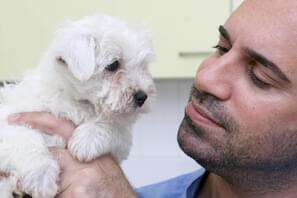Cat bite abscesses: what to do

In this, the first in series of guest blog posts by vet Marc Abraham, we take a look at the tricky subject of cat bite abscesses - and what to do if your cat falls ill with one
The clocks going forward this weekend means that we humans can now look forward to enjoying longer daylight hours, but we're not the only ones planning to spend more of our precious time outside.
For as winter ends and spring begins, it's time for our cats to establish territories, claim that garden hedge, and of course get a bit frisky too, with vets across the land seeing the direct result of this increased outdoor behaviour - the cat bite abscess.
Mainly at risk are male unneutered toms, their awakening testosterone levels fuelling intense scraps to protect their patches, but any cat can cause or be on the receiving end of these nasty bites.
Cat bite abscesses (CBAs) are extremely common. They occur when bacteria that are normally found in the cat's mouth are injected through skin via the fang-like canine teeth, classically leaving two distinct puncture wounds. These tiny wounds often quickly heal, trapping beneath them bacteria that then multiply, fester and expand, causing toxins to build and form the characteristic thick, smelly, greenish pus.
Experienced cat owners will recognise only too well their beloved furry friend fashioning either an obvious facial swelling - if the cat stayed to fight (a source of much pride among male cat owners) - or a wounded back-end if it was scared and ran away. Sometimes swellings will already ooze pus, as they commonly burst; especially, it seems, if you own a pale-coloured carpet.
As well as on the face and tail, CBAs can appear anywhere on the body, including on legs and paws - usually presenting as an extremely lame limb (comparable, pain-wise, with a bad fracture) as pus infiltrates and expands deeper between muscle layers, rarely causing the obvious 'lump' on the skin.
As with most conditions, the treatment of CBAs should be speedy, as delays can cause more tissue death (necrosis), bacteria entering the bloodstream, fever, loss of appetite and even vomiting. Your vet will most likely clip and clean affected areas and, if it is not already burst, will lance the abscess with the patient conscious or under sedation/anaesthetic.
After draining and flushing, antibiotics and pain relief can be given and owners instructed to bathe resulting wounds regularly. Seen early, simple CBAs usually heal quickly, provided your cat is healthy; more complicated wounds require surgery to fix.
Prevention of CBAs is virtually impossible unless you have an indoor cat, but castration usually reduces aggression and the likelihood of getting into scraps.
Marc Abraham is a TV vet who regularly gives the nation pet advice on This Morning, BBC Breakfast and Daybreak. As well as promoting responsible pet ownership, rescue pet adoption, microchipping and responsible dog breeding, Marc is also an active campaigner against the puppy farming industry and is the founder of Pup Aid. Marc has also written the books Vet on Call and Pets in Need and also has the Canine Care iPhone app for dog owners. For more about Marc, visit www.marcthevet.com or follow him on X @marcthevet

